Handmade Pottery: Your Fun and Profitable Side Hustle
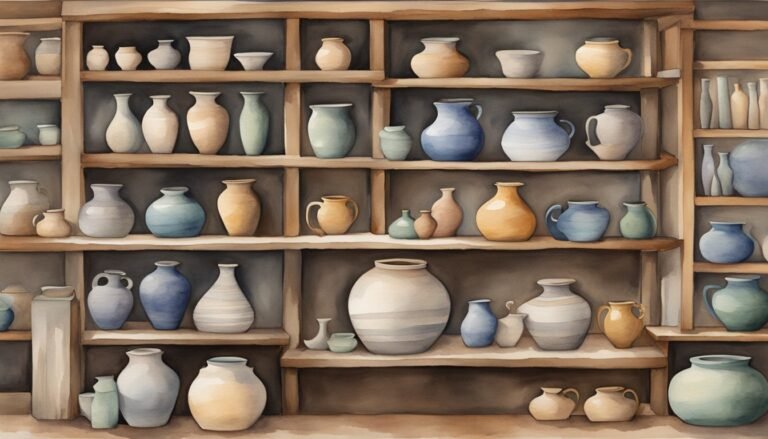
Creating handmade pottery can be a fulfilling side hustle that combines creativity with functionality.
Whether you love crafting mugs, vases, or plates, the charm of unique and artistic pieces not only brings joy but also creates a potential income stream. Handmade pottery lets you express your artistic side while providing beautiful, everyday items that people appreciate.
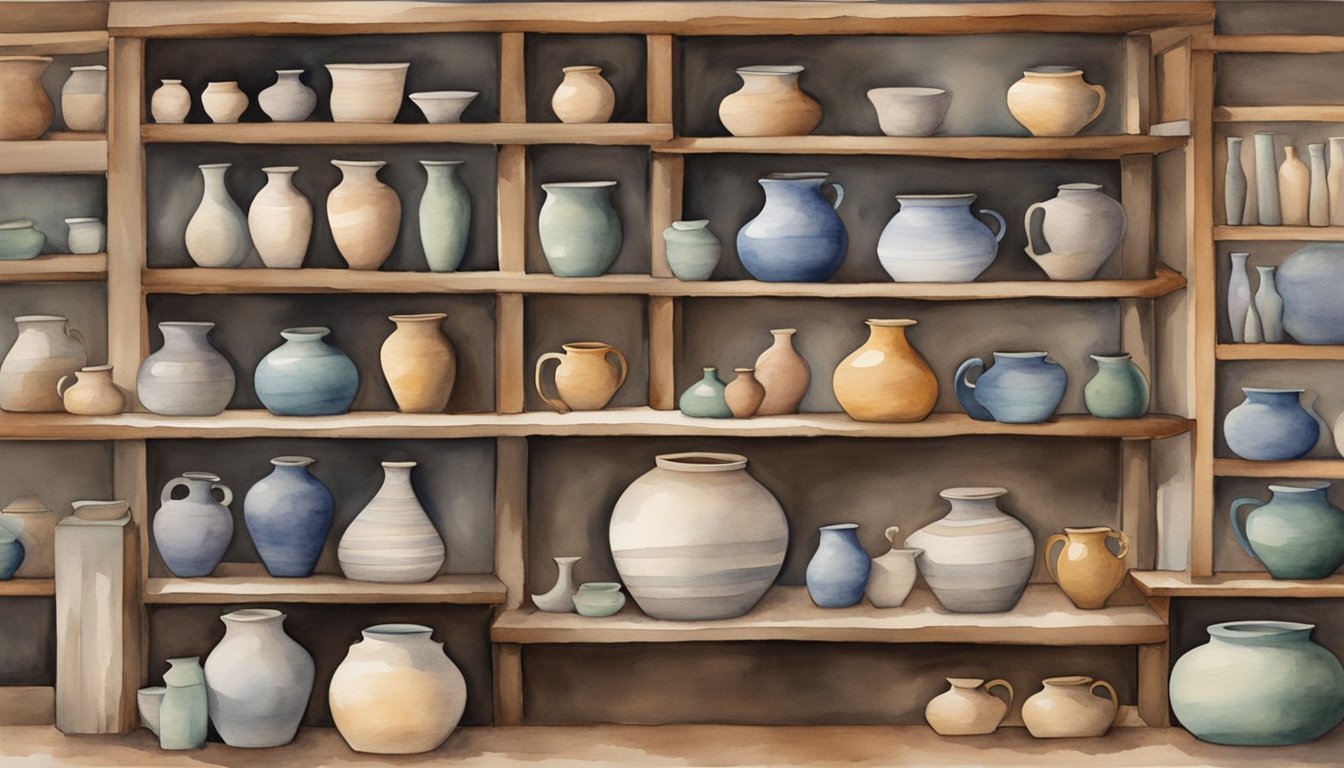
Supporting independent artisans and sellers through platforms like Etsy allows you to find and purchase unique pieces that showcase the talent and dedication of the creators.
Customizing your pottery designs and techniques not only makes your products stand out but also connects you directly with your customers, ensuring that each piece you create has a personal touch.
From kitchenware to home decor, handmade pottery adds a special flair to any space.
The perfect blend of creativity and utility makes it an ideal choice for both a hobby and a side business.
As you embark on this journey, learning about handmade techniques and unique designs can inspire you and help you develop your own style.
Key Takeaways
- Handmade pottery combines art and functionality.
- Unique designs connect creators with customers.
- Pottery is ideal for personal and business use.
The Art of Pottery Making
Pottery combines creativity and craftsmanship, making it a fulfilling side hustle.
You’ll learn the basics of pottery and the detailed process of transforming clay into beautiful, functional pieces.
Understanding Pottery
Pottery is one of humanity’s oldest crafts, with origins dating back to 29,000 BC.
It involves creating items from clay and then hardening them by heat.
What makes pottery special is its ability to fuse function with artistry, allowing you to create unique, handmade goods.
As a pottery artist, you must understand different clay types, such as earthenware, stoneware, and porcelain.
Each type has its own characteristics and uses.
For instance, earthenware is porous and needs to be glazed to hold liquid, while porcelain is known for its strength and translucence.
From Clay to Craft
The pottery-making process involves several steps.
First, you need to prepare your clay by wedging it to remove air bubbles and ensure consistency.
Once your clay is ready, choose a pottery-making technique like hand-building, wheel throwing, or slip casting.
Next, shape your clay into the desired form.
Hand-building allows for more control and creativity, while wheel throwing helps create symmetrical pieces.
After shaping, let your pottery dry to a leather-hard state before trimming and refining its shape.
After drying, bisque fire your pottery to harden it.
Then comes glazing, where you add colors and designs to your piece.
Finally, a second firing, called glaze firing, sets the glaze and completes the process.
This step-by-step journey from raw clay to a finished pot showcases the blend of skill and artistry in pottery making.
By mastering these steps, you can create stunning works that reflect your personal flair and gain a fulfilling side hustle by selling these unique creations.
Design & Inspiration
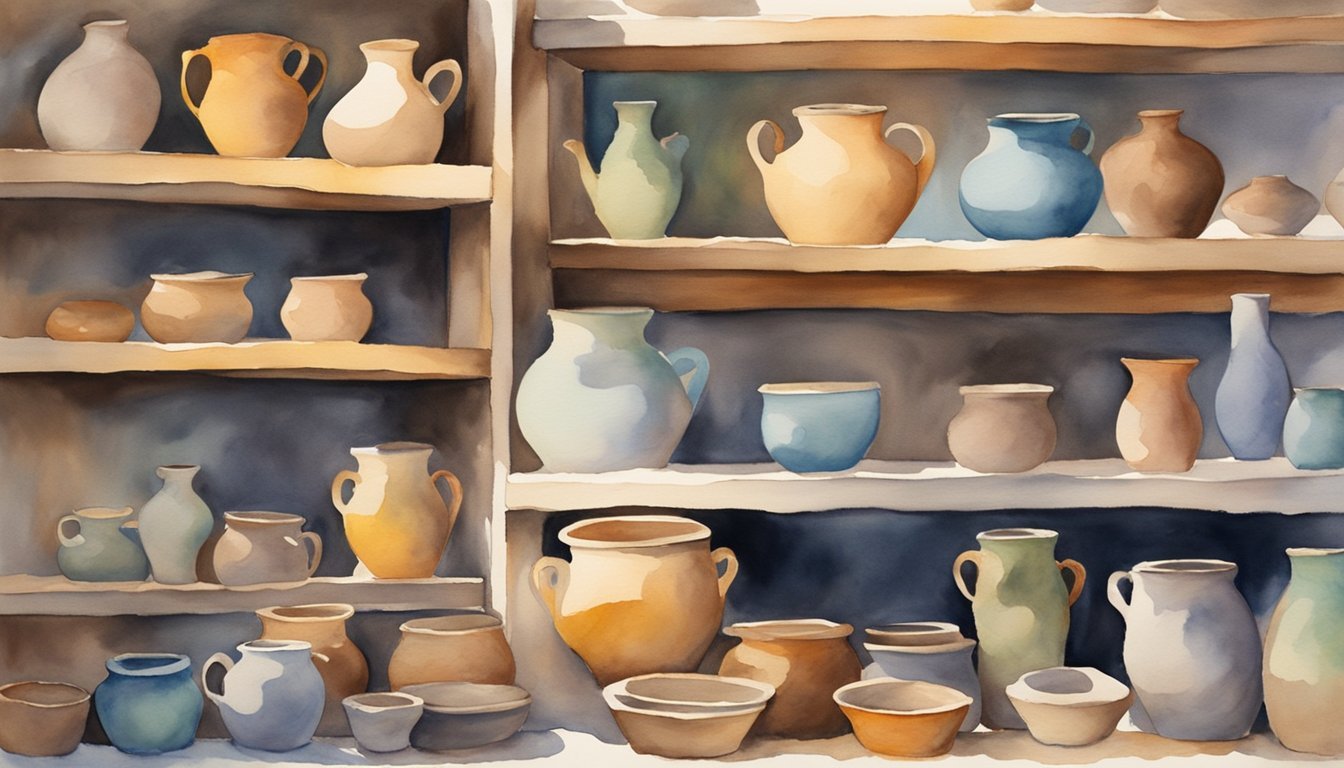
Pottery can be a great side hustle, blending creativity with functionality.
We’ll explore how the balance between form and function influences your designs and how embracing various aesthetics can inspire your unique pieces.
Form Follows Function
When designing pottery, think about the practical use of each piece. Mugs, plates, and bowls need specific shapes to be functional.
A mug with a handle that’s too small isn’t practical, no matter how beautiful it looks.
For a user-friendly piece, ensure handles and rims are smooth and comfortable.
Items like a jewelry tray and spoon rests need to be simple yet useful.
Check out these adorable animal-shaped spoonrests for inspiration.
Choose the right clay and glaze for each object.
For instance, air-dry clay works well for non-watertight items like a mirror frame.
This ensures your pieces remain durable while being visually appealing.
The Aesthetics of Pottery
The way your pottery looks can set you apart from others.
Unique designs, such as those on hand-made ceramic plates, can inspire you to push your creativity.
Experiment with different textures, colors, and patterns to find your style.
Consider trends and personal preferences.
Some people love minimalistic designs, while others prefer intricate patterns or bold colors.
You can even try techniques like weaving clay coils, as seen in these woven flower pots.
Let your surroundings inspire you—nature, art, and even daily life might spark a new idea.
Keep sketching and experimenting to develop a portfolio of beautiful, functional pieces.
Pottery for Everyday Use
Handmade pottery can elevate simple meals with beautiful and functional pieces.
Focusing on both tableware collections and kitchenware essentials, you can find pieces that enhance daily routines and add a touch of art to your home.
Tableware Collections
Handmade tableware collections offer unique and beautiful options for everyday dining.
These collections usually include plates, bowls, and mugs, made to bring a creative touch to your meals.
For example, you can find hand-thrown pieces at With These Hands Pottery by Jennie Blair.
They make each piece in small batches, ensuring quality and uniqueness.
Similarly, Mary Sweeney Pottery offers stoneware with intricate designs inspired by nature.
These collections can be mixed and matched, letting you create a personalized dinnerware set that reflects your style.
Whether you prefer minimalist designs or detailed artistry, handmade tableware can make each meal special and inviting.
Kitchenware Essentials
Handmade kitchenware essentials include items like mixing bowls, utensil holders, and storage jars that serve practical functions in your kitchen.
These pieces are crafted for durability and daily use, often designed to be both functional and decorative.
For instance, From Miry Clay Pottery focuses on balanced pottery, suitable for long-term use and aesthetic appeal.
Their work often includes everyday items you need in a busy kitchen, made with care and precision.
Additionally, Hardwick Handmade creates elegant and playful pieces like paddled and beaten stoneware, perfect for adding character to your kitchen.
Handmade pottery not only serves its purpose but also acts as art, bringing joy and creativity to routine tasks.
Showcasing the Studio
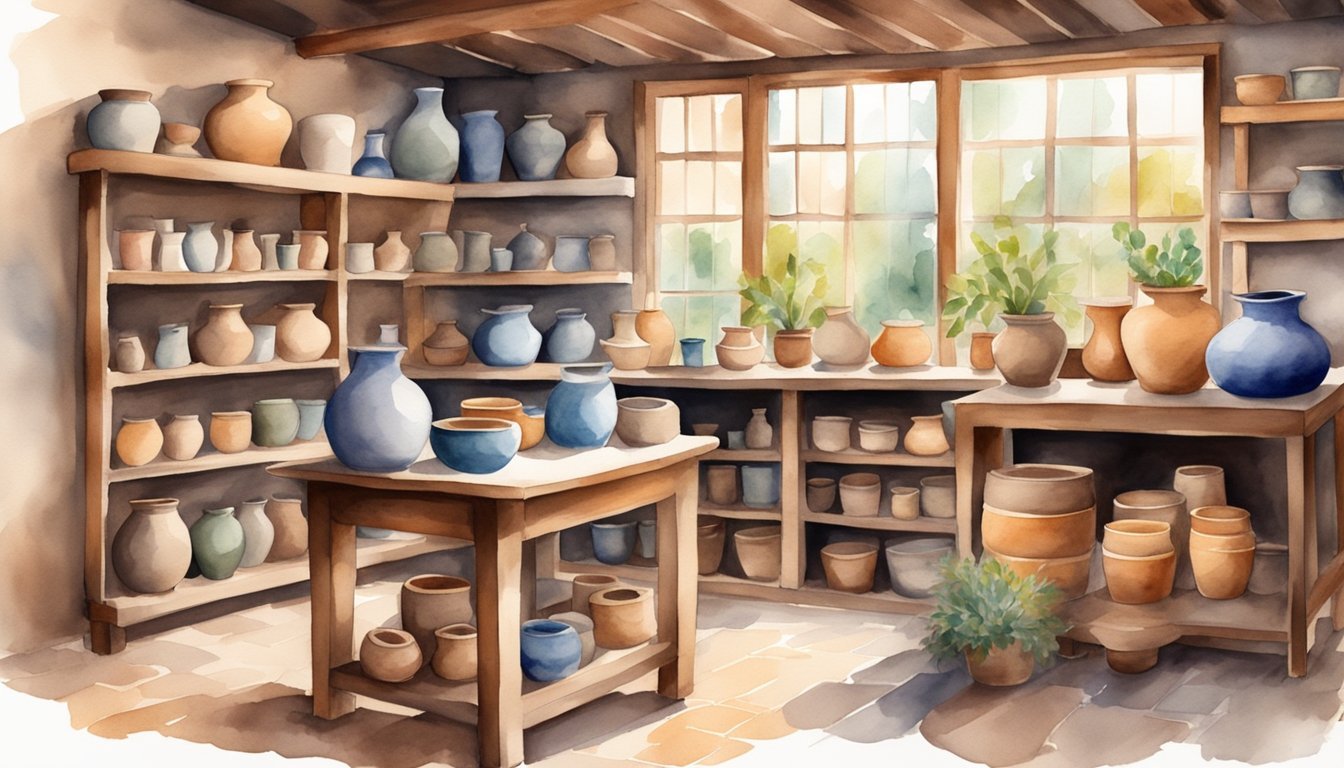
When you visit a pottery studio, you’re not just stepping into a workspace; you’re entering a community where art and creativity thrive.
This section explores the journey through the studio and introduces you to the makers behind the masterpieces.
A Journey Through the Studio
Walking into a pottery studio often feels like stepping into another world.
You might see the workstations where artists skillfully mold their pieces.
Look out for the gas kilns, like those at Purple Sage Pottery, which fire most of the creations.
Take note of the tools and materials scattered around.
Clay, glazes, and carving tools are essential components you’ll find.
Studios often have a display area showcasing finished work, giving you a glimpse of the artists’ diverse talents.
The studio setup can vary, but it often includes spaces for both creating and displaying pottery.
This setup supports the artists’ workflow and helps in transitioning from crafting to showcasing.
It’s not uncommon to see custom-built shelves, like rough-cut cedar planks found in some studios, enhancing both the visibility and functionality of the space.
Meet the Makers
Meeting the artisans is a vital part of the studio experience.
These are the individuals who pour their hearts into every piece they create.
At pottery studios like Birch Grove Studios, you can often find talented artists working on their latest projects.
You might get to chat with the makers and learn about their inspirations and techniques.
Many of them enjoy sharing their stories and the journey that led them to pottery.
Whether they’re seasoned professionals or hobbyists exploring their craft, each has a unique perspective.
Often, these artists work on their pottery as a side hustle, balancing it with other jobs.
This dual life adds another layer of passion and dedication to their work.
Visiting a studio gives you a real sense of the creativity and hard work behind each pottery piece.
Handmade Pottery Techniques
When it comes to handmade pottery, having the right techniques can mean the difference between a quality piece and a flop.
Learning these skills can also open doors for starting a side hustle in pottery.
Crafting with Precision
Crafting pottery requires precision and patience, especially if you want to create pieces that can be sold.
One essential technique is the pinching method where you use your fingers and thumb to shape the clay.
This is great for making bowls and small pots.
Another popular method is coil building.
This involves rolling out long, snake-like coils of clay and stacking them to form a pot or vase.
The coils are then smoothed to create a seamless surface.
Slab building is another technique where you roll out flat pieces of clay and cut them into shapes, which can be joined to create more angular structures like boxes or trays.
Time-Honored Methods
Time-honored methods of pottery include techniques that have been used for centuries and are still popular today.
One such method is wheel throwing, where you shape the clay on a potter’s wheel while it spins.
This technique requires practice but allows you to create symmetrical and polished pieces.
Another traditional technique is weaving clay coils to make items like flower pots.
This combines the skills of weaving with pottery, resulting in unique and intricate designs.
Hand-building techniques, such as those covered in various pottery guides, focus on manual manipulation of clay without the use of a wheel.
These methods often result in pieces that are unique and personalized, making them valuable and collectible.
These techniques not only enhance your craftsmanship but also provide various approaches to creating and selling your handmade pottery, potentially turning it into a profitable side hustle.
Limited Edition Pieces
Limited edition pottery pieces provide a unique opportunity for collectors.
These items are not only rare but also showcase high quality and craftsmanship.
The Value of Exclusivity
Limited edition pottery is valued for its scarcity.
Each piece is produced in small quantities, making it a rare find.
The limited availability enhances the appeal, making these pieces sought after by collectors.
Owning limited edition pieces can be a great side hustle.
Their rarity often means they appreciate in value over time.
You can buy them when they’re released and sell them later at a higher price.
This exclusivity attracts serious collectors willing to pay a premium for unique additions to their collections.
Collector’s Pride
Collectors take pride in owning limited edition pottery.
Each piece is a testament to the artist’s skill and dedication.
These items often come with certificates of authenticity, further adding to their value.
Your collection can include a variety of styles and designs.
For instance, Ephraim Pottery offers limited edition art tiles and tableware that are handmade with great care.
Displaying limited edition pieces can also be a conversation starter.
They tell a story of artistic excellence and personal taste, making them prized possessions.
Selecting the Right Pottery
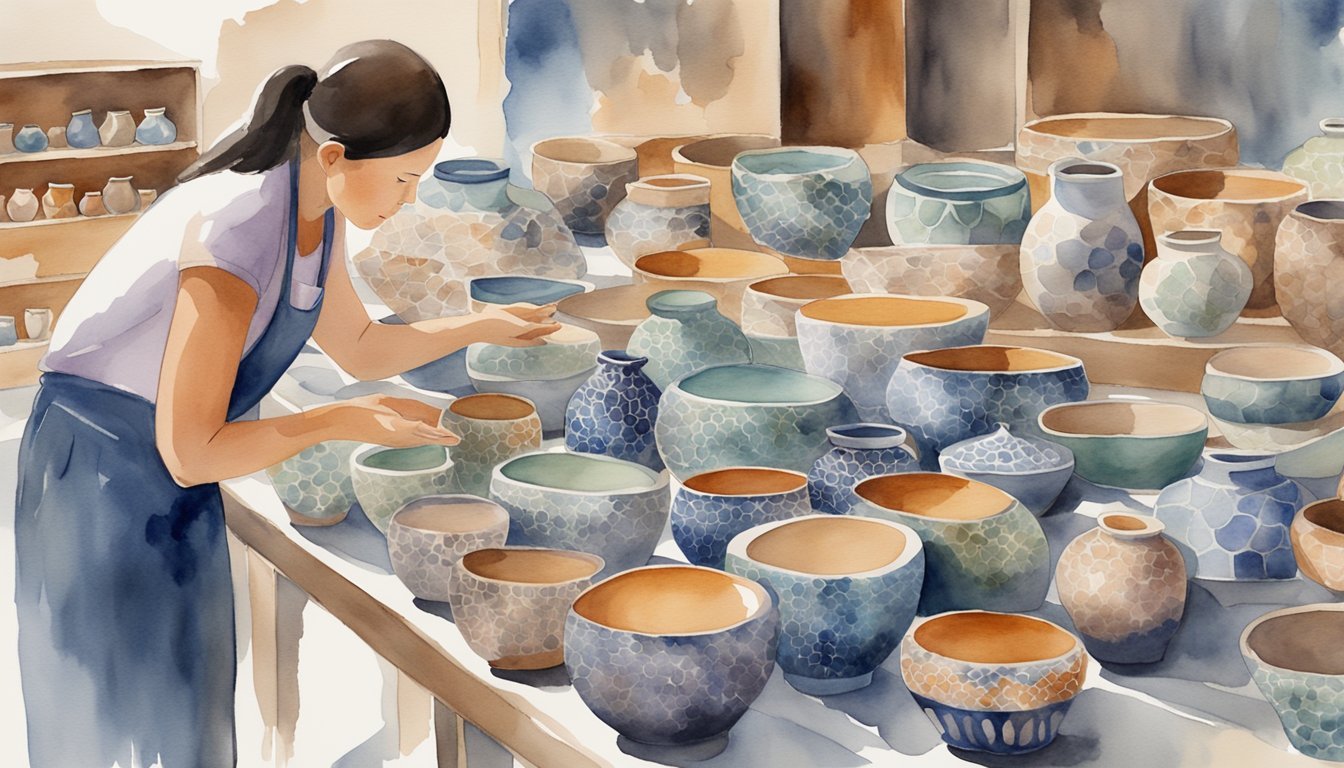
Choosing the right handmade pottery involves matching items to your style and ensuring they meet your needs in terms of functionality and durability.
Whether you’re looking for a unique mug or a decorative piece, keeping these factors in mind will help you make the best choice.
Match Pottery to Your Style
When selecting pottery, think about your personal style and home décor.
Pottery comes in various designs, from rustic to modern.
If you love bright colors, look for pieces with vibrant glazes.
Prefer a minimalist look? Go for simple, clean lines and neutral tones.
Consider how the pottery will fit with your existing items.
A beautifully crafted mug or vase should complement your kitchen or living space.
Unique designs can also be conversation starters when you have guests.
Handmade pottery often reflects the artisan’s personality, so choose pieces that resonate with you.
It’s not just about the look but also about the feeling the piece gives you when you use or see it every day.
Functionality & Durability
Pottery should not only look good but also serve a purpose.
Consider what you need the item for.
If you’re looking for a daily-use mug, make sure it’s comfortable to hold, easy to clean, and the right size for your beverages.
Think about the material and firing process, which affects durability.
Stoneware and porcelain are typically more durable and less porous than earthenware, making them suitable for items like mugs and bowls that you use frequently.
Check if the pottery is dishwasher or microwave safe, especially for functional pieces.
This can save you a lot of time and ensure you enjoy using your pottery without extra hassle.
By choosing pieces that are both functional and durable, you ensure they’ll be a valuable addition to your home and daily routine.
Pottery in Home Decor
Adding handmade pottery to your home decor brings a unique, artisanal touch.
You’ll find several creative ways to make your space both beautiful and functional.
Creating Aesthetic Spaces
Using pottery, you can create visually appealing areas in your home.
Consider displaying vases with various shapes and glazes on shelves or tables.
Handmade pottery adds texture and color, making any room more inviting.
Groupings work well for smaller pieces.
Arrange them with larger objects to anchor the collection and add balance.
For instance, pair small trays or bowls with a hearty vase to create a cohesive look.
Since pottery is timeless, it fits different styles from modern to rustic.
Keeping your pottery clean is simple.
Use an extendable duster monthly and wash them in warm, soapy water a couple of times a year to maintain their beauty.
Accessorizing with Pottery
Accessorizing your living spaces with pottery can elevate your decor.
Use handmade pottery trays for a stylish storage solution.
They’re great for holding keys, jewelry, or even as a base for candles and floral arrangements.
Pottery planters are ideal for showing off your indoor plants.
They’re not just functional but also add an artisanal touch to your greenery.
Supporting local artisans by purchasing their pottery not only supports small businesses but adds a story to each item in your home.
This connection makes your decor feel even more special, knowing each piece was crafted with care and skill.
Consider filling vases with decorative items like potpourri or woven spheres to match your decor’s vibe.
This small detail adds warmth and charm to any room.
Connecting with Customers
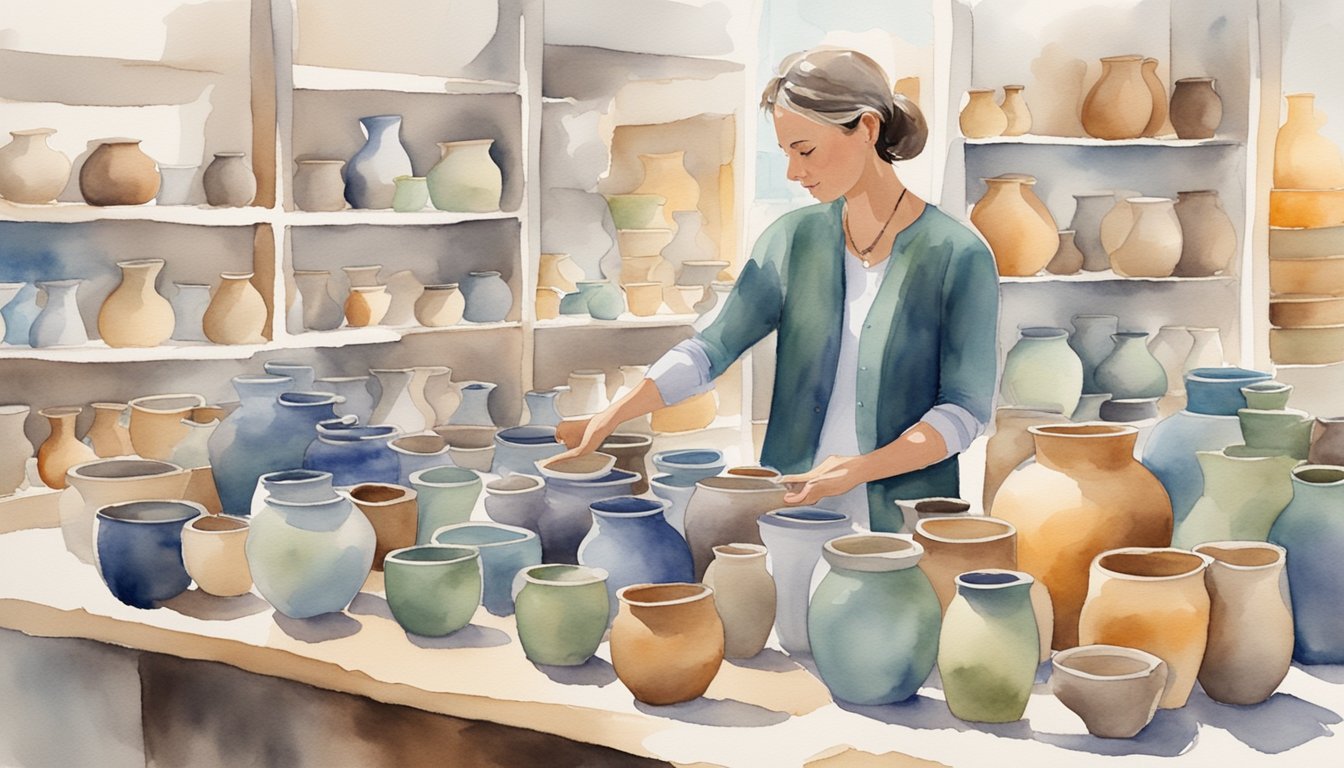
To succeed in your handmade pottery side hustle, connecting with customers is key.
Focus on providing excellent customer service and building strong relationships.
Excellence in Customer Service
Good customer service can be the backbone of your pottery business.
Aim to be responsive by promptly answering queries.
Use your contact us page to ensure ease of communication.
Offer clear and friendly responses.
When dealing with complaints, listen attentively and offer speedy solutions.
Updates about orders, delays, and shipping will keep your customers informed and satisfied.
A professional yet warm tone in email interactions can set you apart.
Ensure your website is user-friendly, with easy navigation and clear product descriptions.
Including a FAQ section can also address common customer concerns efficiently.
Building Relationships
Strong relationships with your customers can turn one-time buyers into loyal supporters.
Personalized communication is key.
Using their names in emails and thanking them for their purchases can make a positive impact.
Send out a newsletter with updates about new products, sales, or pottery classes.
Offer exclusive discounts to subscribers to encourage repeat purchases.
Share behind-the-scenes content on social media to create a connection.
Engage with your audience through comments and messages.
Hosting live Q&A sessions can also help you connect with them on a deeper level.
Remember, building trust and showing genuine interest in your customers will set your pottery side hustle apart.
Purchasing and Shipping
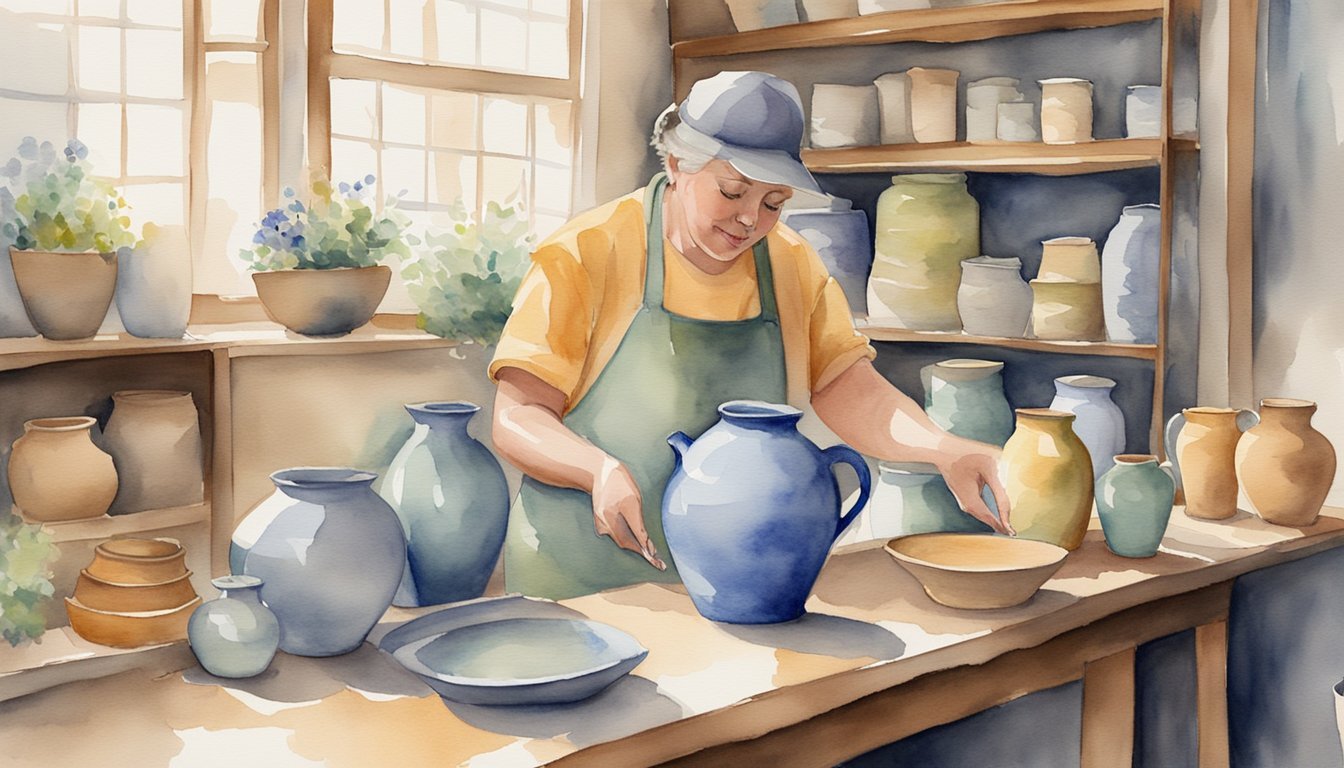
When buying handmade pottery online, it’s essential to find reputable sellers and ensure your items are packed securely.
Good customer service can make all the difference in a smooth transaction.
Secure Your Pottery Online
Finding the right handmade pottery online starts with reliable websites like Etsy and Gifted Artisan.
Look for sellers with high ratings and positive reviews.
Check their return policies and customer service responsiveness.
Important tips:
- Read Reviews: Real customer experiences can reveal a lot about product quality and service.
- Check Photos: Clear, high-quality images can help you understand what you’re buying.
- Ask Questions: Contact the seller if you need more information. Good sellers will respond promptly and professionally.
Packaging and Delivery
Once you’ve made a purchase, proper packaging is key to ensure your pottery arrives intact.
Double-boxing is a common method.
Start with a smaller box filled with padding like bubble wrap or foam inserts.
Then place this box inside a larger one with more packing materials like packing peanuts.
Packing Steps:
- Wrap Each Item: Use bubble wrap for each piece to prevent movement.
- Double-Box: The smaller box goes inside a larger one with extra padding to absorb shocks.
- Use Strong Tape: Secure the box with durable shipping tape to prevent it from opening during transit.
Services from companies like The Spruce Crafts emphasize taping the box properly and ensuring there is no movement inside the box to avoid damage.
Always check with the seller for tracking information to keep an eye on your shipment.
Frequently Asked Questions
Many folks have specific questions when it comes to handmade pottery.
Here’s a quick look at unique styles, where to find artists, how to start at home, what to consider when buying, the cost difference, and if you can make pottery without a kiln.
What are some unique styles of handmade pottery?
You might come across rustic, glazed, or intricate carved pottery.
Some artists add their personal touch by incorporating local cultural designs or using special techniques like Raku firing.
These unique styles often reflect the artist’s creativity and skill.
Where can I find pottery artists selling their work?
You can discover pottery artists on websites like From Miry Clay Pottery, Pawley Studios, and local artisan markets.
Online platforms like Etsy also have many talented potters showcasing and selling their creations.
How do you start making your own pottery at home?
Start by getting a basic pottery wheel, clay, and some simple tools.
You can learn through online tutorials or local classes.
With practice, you’ll improve your technique and begin creating your own unique pieces.
It’s a great way to explore a creative side hustle.
What should you look for when buying pottery dinnerware?
Ensure that the pottery is lead-free and food-safe.
Look for durability, especially if you plan to use it in the dishwasher, microwave, or oven.
Handmade stoneware, like what you find at Hughes Pottery, is often a good choice for kitchen and table use.
Why does handmade pottery cost more than mass-produced items?
Handmade pottery involves a lot of time and skilled craftsmanship.
The artist invests in high-quality materials and spends hours perfecting each piece.
This meticulous process and the unique designs contribute to the higher cost.
Thus, you’re paying for both the quality and the artist’s dedication.
Can you create pottery without a kiln, and if so, how?
Yes, you can create pottery without a kiln using air-dry clay.
This type of clay hardens naturally over time.
While it’s not as durable as kiln-fired pottery, it’s perfect for decorative pieces and a great way to try pottery as a beginner or side hustle.






